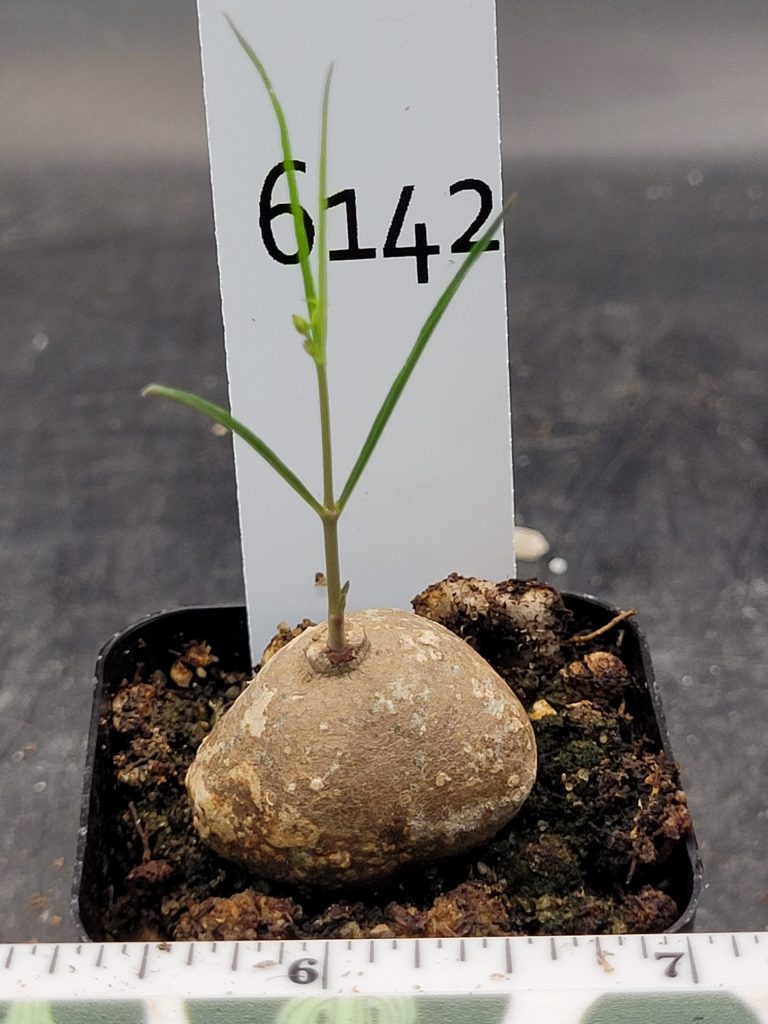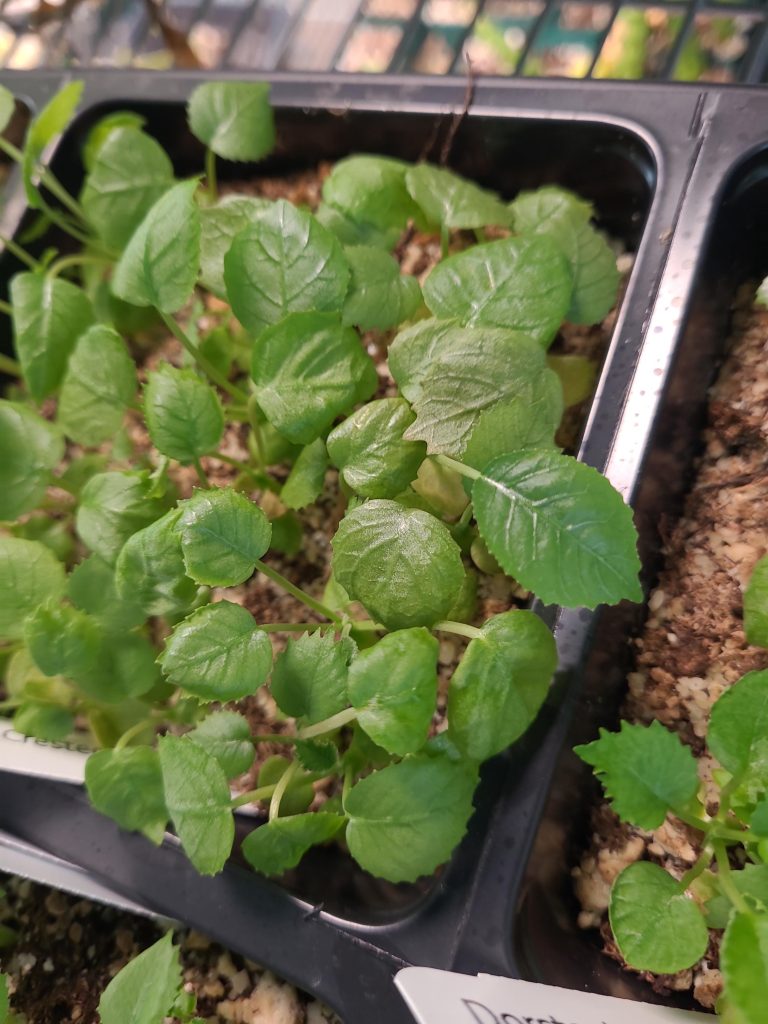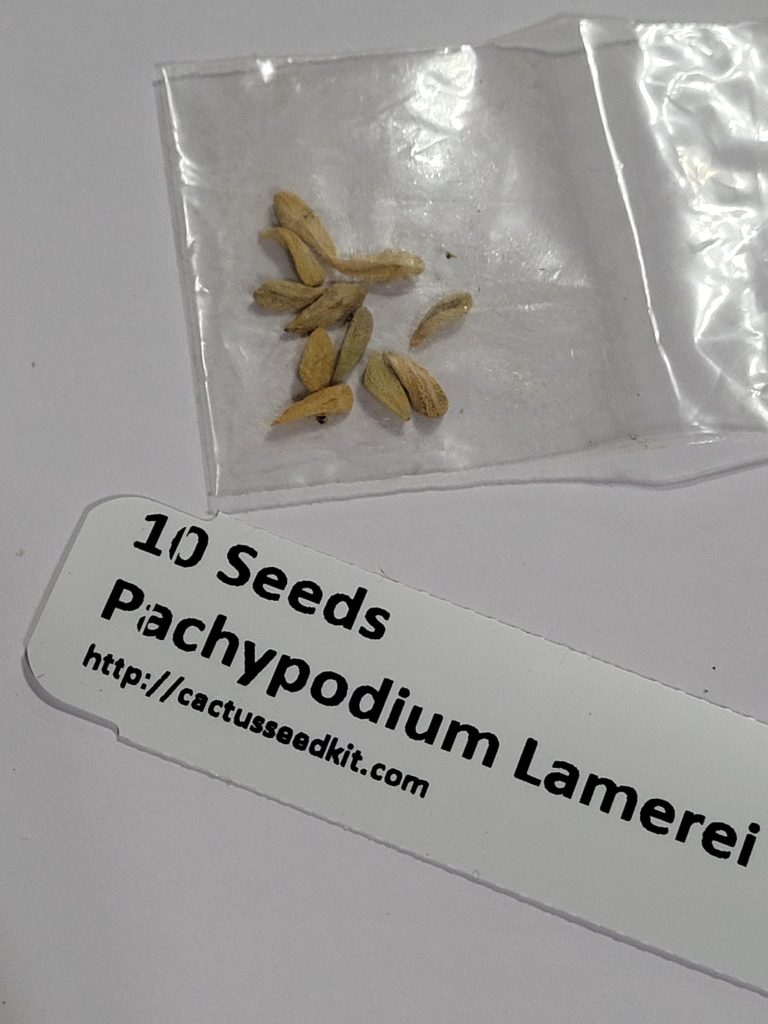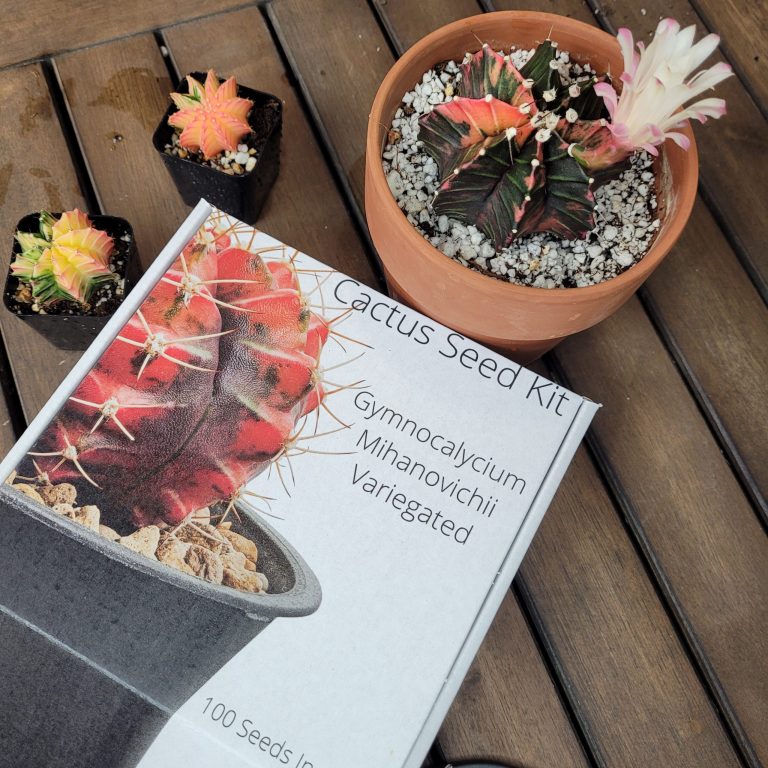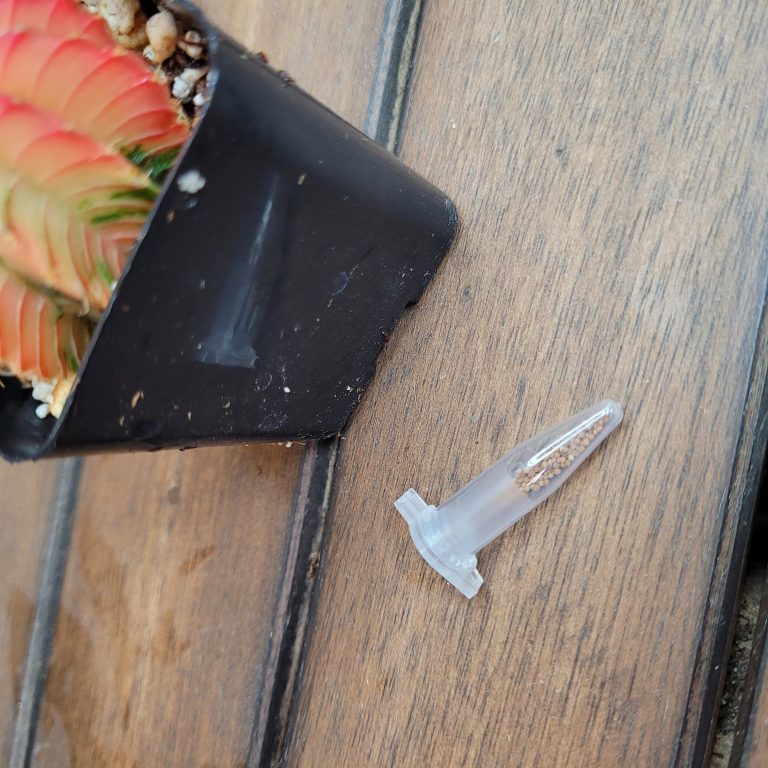Adenium obesum, commonly known as the Desert Rose, is a stunning succulent known for its thick, caudex (trunk-like base), and beautiful, trumpet-shaped flowers. Growing Adenium from seed is a rewarding process that allows you to nurture this exotic plant from the very beginning. In this guide, we’ll walk you through the steps to successfully plant and grow Adenium obesum from seed.
Step 1: Gather Your Supplies
Before you start, make sure you have the following supplies:
- Adenium obesum seeds: Purchase fresh seeds from a reputable supplier to ensure high germination rates.
- Seed trays or small pots: Use shallow containers with drainage holes.
- Well-draining soil mix: A cactus or succulent mix works well. You can also create your own mix with equal parts of coarse sand, perlite, and potting soil.
- Plastic wrap or a clear plastic lid: To create a humid environment for germination.
- Watering can or spray bottle: For gentle watering.
- Labels: To keep track of planting dates and seed varieties (if planting multiple).
Step 2: Prepare the Soil
Adenium obesum seeds need a well-draining medium to prevent rot. Prepare your soil mix by combining equal parts of coarse sand, perlite, and potting soil. This mixture ensures that water drains quickly, mimicking the plant’s natural environment.
Fill your seed trays or small pots with the soil mix, leaving about 1/2 inch (1.3 cm) of space at the top.
Step 3: Plant the Seeds
- Moisten the soil: Lightly water the soil before planting the seeds. The soil should be damp but not soggy.
- Sow the seeds: Place the Adenium seeds on the surface of the soil, spacing them about 1 inch (2.5 cm) apart. Cover them with a thin layer of soil, about 1/8 inch (3 mm) deep.
- Create a humid environment: Cover the seed trays or pots with plastic wrap or a clear plastic lid to retain moisture. This creates a greenhouse effect, which is essential for germination.
- Label the containers: Write down the planting date and any other relevant information on a label, and place it in the tray or pot.
Step 4: Germination and Early Care
- Temperature and light: Place the seed trays or pots in a warm location with bright, indirect light. The ideal temperature for germination is between 75-85°F (24-29°C).
- Monitor moisture: Keep the soil consistently moist during germination. Check daily, and if the soil starts to dry out, mist it lightly with water.
- Wait for germination: Adenium seeds typically germinate within 7-14 days, but it may take up to three weeks. Be patient and keep an eye out for tiny seedlings emerging from the soil.
Step 5: Caring for Seedlings
Once your Adenium obesum seeds have germinated, follow these steps to care for the young seedlings:
- Gradually reduce humidity: Once the seedlings have developed a few sets of true leaves, begin to gradually remove the plastic cover over a period of several days. This will help them adjust to normal humidity levels.
- Light: Move the seedlings to a bright location with plenty of indirect sunlight. If natural light is insufficient, consider using a grow light to provide 12-14 hours of light per day.
- Watering: Allow the soil to dry out slightly between waterings. Water deeply but infrequently to encourage strong root growth. Be careful not to overwater, as Adenium seedlings are susceptible to root rot.
- Fertilization: Once the seedlings are a few inches tall, you can begin to fertilize them with a balanced, water-soluble fertilizer diluted to half strength. Fertilize every 4-6 weeks during the growing season (spring and summer).
Step 6: Transplanting and Ongoing Care
- Transplanting: When the seedlings are about 3-4 inches (7-10 cm) tall and have a well-established root system, it’s time to transplant them into individual pots. Use a well-draining cactus or succulent mix, and make sure the pots have drainage holes.
- Sunlight: Adenium obesum thrives in full sun, so gradually acclimate your plants to more direct sunlight after transplanting. Start with a few hours of morning sun and increase exposure over a couple of weeks.
- Watering: Continue to water deeply but infrequently, allowing the soil to dry out between waterings. During the winter months, when the plant is dormant, reduce watering significantly.
- Pruning: To encourage a bushy growth habit and a thick caudex, prune your Adenium obesum regularly. This can be done in the spring or early summer.
- Pests and diseases: Keep an eye out for common pests like spider mites, mealybugs, and aphids. Treat infestations promptly with insecticidal soap or neem oil. To prevent fungal issues, avoid overhead watering and ensure good air circulation around the plants.
Conclusion
Growing Adenium obesum from seed is a rewarding and enjoyable process that allows you to nurture this unique succulent from its earliest stages. By following these steps, you can successfully plant, germinate, and care for your Desert Rose, watching it grow into a stunning, flowering specimen. With patience and proper care, your Adenium obesum will thrive and bring you beautiful blooms for years to come. Happy planting!

